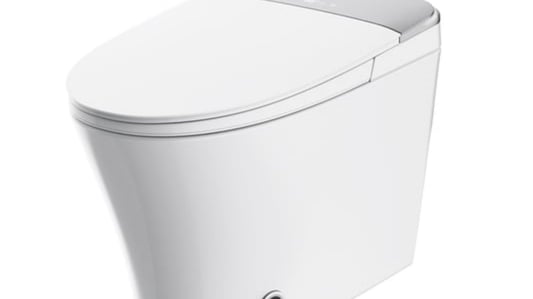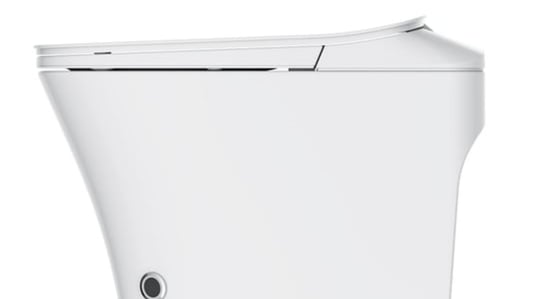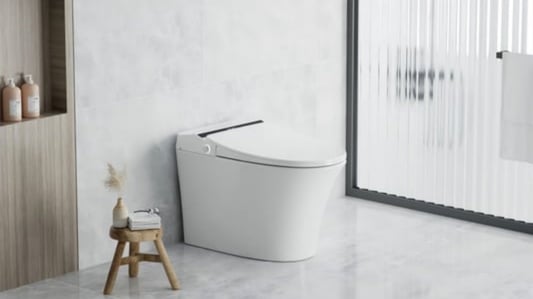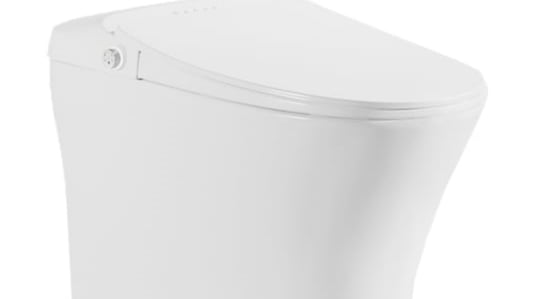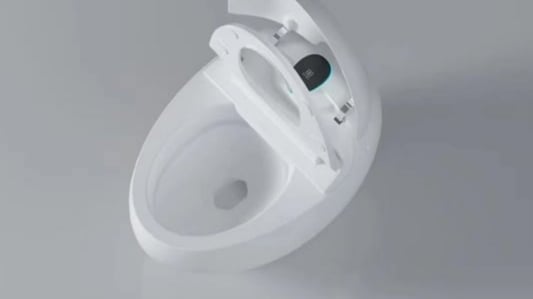Enhanced Comfort and Hygienesmart toilet seat bidets are designed to provide a superior level of comfort and hygiene compared to traditional toilet seats. The bidet feature allows for thorough cleansing after using the toilet, eliminating the need for abrasive toilet paper and reducing the risk of irritation or infection. With adjustable water temperature and pressure settings, users can customize their experience to suit their preferences. The heated seat feature adds an extra touch of luxury, especially during cold winter months.Efficiency and ConvenienceOne of the key benefits of a smart toilet seat bidet is the convenience it offers. With the touch of a button, users can activate the bidet function for a quick and efficient cleansing experience. This eliminates the need for separate wipes or sprays, saving time and reducing waste. Some models even come equipped with additional features such as a built-in air dryer, eliminating the need for toilet paper altogether. The self-cleaning nozzle ensures optimal hygiene with minimal effort required from the user.Cost-Effective SolutionWhile the initial investment in a smart toilet seat bidet may seem significant, it can actually lead to long-term cost savings. By reducing the reliance on toilet paper and wet wipes, users can save money on these consumables over time. Additionally, the enhanced hygiene provided by the bidet function can lead to fewer visits to the doctor for issues related to poor bathroom hygiene, ultimately saving on healthcare costs in the long run.Environmental SustainabilityIn addition to cost savings, smart toilet seat bidets offer environmental benefits as well. By reducing the use of toilet paper, bidet users can significantly decrease their ecological footprint. Toilet paper production contributes to deforestation and water pollution, making the switch to a bidet a more sustainable choice for environmentally-conscious consumers. Some smart toilet seat bidets even come equipped with energy-saving features to further minimize their impact on the environment.Health and Wellness BenefitsMaintaining proper hygiene in the bathroom is essential for overall health and wellness. Smart toilet seat bidets provide a more thorough and hygienic cleansing experience compared to traditional toilet seats, reducing the risk of urinary tract infections and other bathroom-related illnesses. The heated seat feature can also provide relief for individuals with certain medical conditions such as hemorrhoids or irritable bowel syndrome, making bathroom trips more comfortable and less stressful.Customizable SettingsEach user has their own preferences when it comes to bathroom hygiene, which is why smart toilet seat bidets come with customizable settings. From adjusting water temperature and pressure to selecting different cleansing modes, users can tailor their experience to meet their specific needs. Some models even offer additional features such as a deodorizer or night light, enhancing the overall bathroom experience and making it more personalized.Easy Installation and MaintenanceMany smart toilet seat bidets are designed for easy installation, requiring minimal tools and expertise. Most models are compatible with standard toilet fixtures, making it simple to retrofit an existing toilet with a bidet seat. Maintenance is also straightforward, with self-cleaning nozzles and removable components for easy cleaning. Regular maintenance ensures optimal performance and prolongs the lifespan of the bidet seat, making it a hassle-free addition to any bathroom.Improved AccessibilityFor individuals with mobility issues or disabilities, smart toilet seat bidets can greatly improve accessibility in the bathroom. The hands-free operation and customizable settings make it easier for users with limited mobility to maintain proper hygiene without assistance. Some models even come with additional features such as a remote control or illuminated control panel for added convenience. By promoting independence and dignity, smart toilet seat bidets enhance the overall quality of life for users with accessibility challenges.Modern Design and TechnologySmart toilet seat bidets combine functionality with modern design and technology, elevating the overall aesthetic of the bathroom. Sleek and compact, these bidet seats are available in a variety of styles and finishes to complement any bathroom decor. The touch-screen control panel and LED indicators add a futuristic touch, while the advanced technology ensures a seamless and efficient user experience. With wireless connectivity and smart home integration, some models even offer voice control and app compatibility for added convenience.User-Friendly OperationDespite their advanced features, smart toilet seat bidets are designed with user-friendly operation in mind. The intuitive control panel and simple interface make it easy for users of all ages to operate the bidet functions with confidence. Clear instructions and visual indicators guide users through the different settings and options, ensuring a seamless and enjoyable experience every time. With just a few simple adjustments, users can transform their bathroom routine into a more comfortable and hygienic experience.Quote InquiryContact us
- Home
-
Product
-
Smart toilet
- Foot Induction Flush For Hotel B18
- Automatic Flush nozzle clean B31
- One Touch Warm Air Drying Foot Induction B32
- One Piece Instant Heating Auto Flush B33
- Automatic flip B52
- Instant Heated auto flush B92
- Luxury Self Clean C18
- Instant Heated with remote control C28
- Foot Sensor Flush C68
- Heated seat with warm water U11
- Automatic Flush U13
- Luxury Foot Induction Flush U14
- One Piece Gesture Auto flip B51
-
Smart toilet seat
- Multi-layer Parquet
- Decorative Mouldings
- Window
-
Smart toilet
- Company
- Case
- Blog
- Contact us






